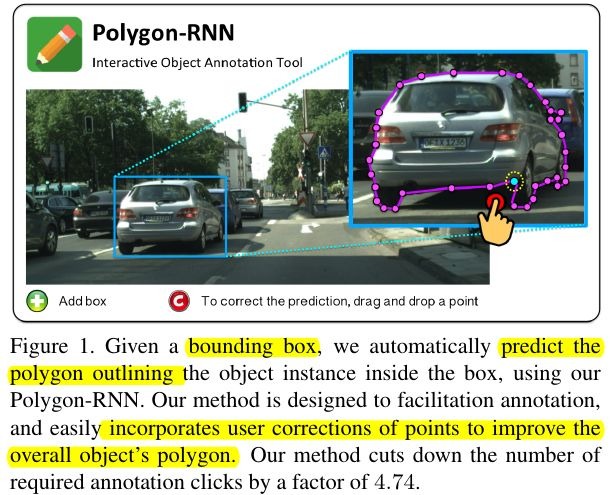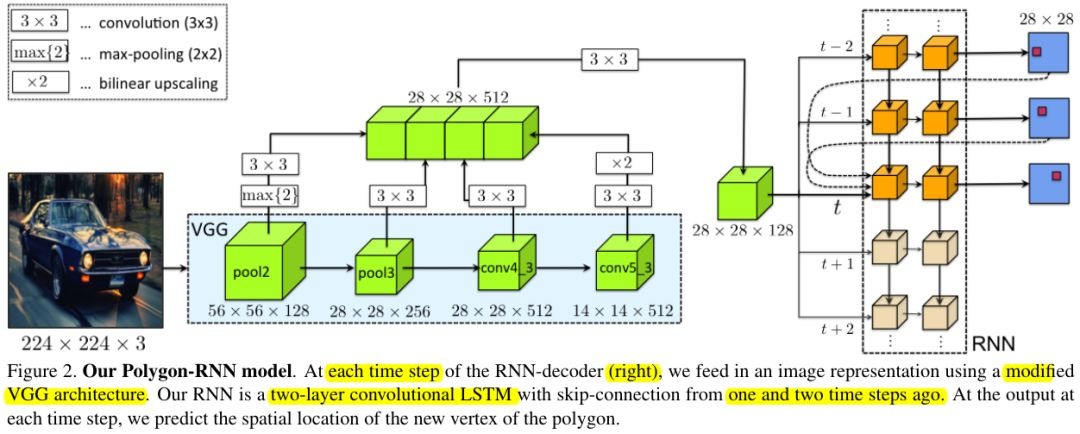Keyword [Semi-Automatic] [Polygon-RNN]
Castrejon L, Kundu K, Urtasun R, et al. Annotating object instances with a polygon-rnn[C]//Proceedings of the IEEE Conference on Computer Vision and Pattern Recognition. 2017: 5230-5238.
1. Overview
1.1. Motivation
- Most current method treat object segmentation as a pixel-labeling problem
In this paper, it cast this segmentation task as polygon prediction
- proposed Polygon-RNN architecture for semi-automatic annotation
- speed up the annotation process by 4.7 times in Cityscapes dataset
1.2. Polygon-RNN

1.2.1. Input
- image crop
- vertices sequence

1.2.2. Feature Extractor
- modified VGG
- (boundary) low-level about the edge and corner
- (see object) high-level about the semantic information
- exploit bilinear interpolation or max-pooling before concat
1.2.3. RNN
- ConvLSTM. preserve spatial information; reduce parameters compared to FC-RNN

1.3. Related Work
1.3.1. Semi-automatic Annotation
- GrabCut. exploit annotation
- GrabCut + CNN
Most define a graphical model at the pixel-level which are hard to incorporate shape prior.1.3.2. Annotation Tool
1.3.3. Instance Segmentation
- pixel-level explicit box or patch
- produce polygon
1.4. Training Detail
- cross-entry at each time step of RNN
- feed t-1, t-2 gt to prediction t step
- for the first vertex prediction. train another CNN using multi-task loss
- 250 ms/img about inference time
- set chessboard distance threshhold T. If distance large than T, simulated human correction
1.5. Dataset
- Cityscapes
- KITTI
1.6. Data Process
- perform polygon simplification with zero error in the quantized grid. eliminate vertices which are in a line or fall into same grid
1.7. Data Augmentation
- random flip
- enlarged box 10%~20%
- random select starting vertex
2. Experiments
2.1. Metrics
- IoU
- number of clicks
2.2. Step Limitation

- set max step to 70
- instance-wise. treat the entire instance as an example
- component-wise. treat each component as a single example
2.3. Result

